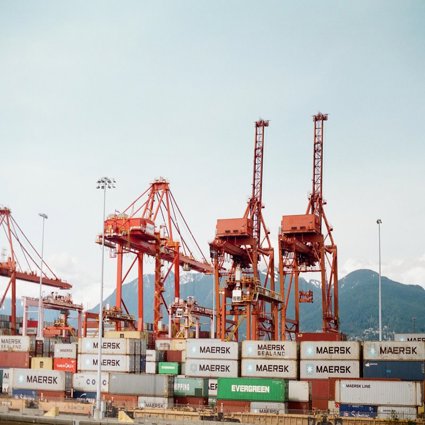
How did trade get global?
This lesson explores how and why trade has become global
This lesson focuses on the geographical concept of scale. Pupils learn that through time, trade has become increasingly global and discover the reasons for this. They learn to define the term ‘globalisation’ and complete a trade timeline to track the development of trade through time from local to global scale. The lesson has cross-curricular links with the new history National Curriculum as it examines trade chronologically.
Key questions
What is ‘trade’?
Could you live without trade?
What different scales can goods be exchanged at?
What makes trade ‘global’?
How and why has trade changed through time to become global?
What was trade like during each time period?
Where do the products we buy come from?
Starter
Begin the lesson with a logo quiz (How did trade get global? PPT). Pose the question: Do you recognise these company logos? (Toys R Us, Toyota, Pringles, Apple, Starbucks, Shell, Hello Kitty, Lacoste).
The teacher could possibly extend more able pupils by asking them if they know which countries these companies first started in and what type of goods they sell.
Reveal the answers and additional information on each global company hidden behind picture by moving the images on the PPT slide.
Explain to pupils that these companies operate on a global or international scale and you can buy products made by these companies all over the world. Put this fact into context by telling pupils that a class of children in Australia, India, China etc. are also likely to recognise these logos and discuss the two images of Starbucks in Shanghai (China) and Ikea in Saudi Arabia (The Middle East) with the pupils.
Main Activity
Introduce the learning objectives to pupils:
-
To understand what trade is.
-
To discover how and why trade has become global.
Provide pupils with a clear definition of the term ‘trade’: ‘the buying and selling of goods and services we want and need’. Explain it involves an exchange of goods (and/or services) in return for other goods and services or money.
Read the Adam Smith quote ‘Every man lives by exchanging’ and ask pupils: could you live with exchanging, buying or selling?
Explain that when thinking about trade geographically it is important to think about scale (local, to national, to global), and how trade links people from different locations.
Use the PPT slide 10 to model examples of trade being carried out at different scales (local, national and international/global).
Highlight to pupils that trade has occurred since civilisation began, but only at a local scale because people had no contact with others from distance places. During the Stone Ages, for example, trade links were relatively local and tended to only connect people from the same small communities. Ask pupils to volunteer reading the comic strip slide out on the PPT.
Explain to pupils that trade has changed considerably through time. In the past goods and skills were exchanged on a local scale within communities, through time trade has grown to a global scale. Nowadays it links people from locations all over the world. Improvements in technology, transport and communications allow money and items to be exchanged across longer distances and more quickly.
Define the term ‘globalisation’: process of the world’s countries becoming more connected as a result of international trade and cultural exchange.
Highlight the scale of global trade by giving pupils the value of global trade: 18.3 trillion US dollars was made from global trade exports in 2012.
Introduce the aim of the activity to pupils: to research how and why trade has changed through time. Explain it is important to understand what has changed through time to allow trade to be carried out on a larger scale.
Assign table groups with one of the three trade time periods (Stone Ages, 17th Century, 21st Century) to research.
Tell the pupils they will work with a partner to create a section of a Trade Timeline for the working wall and they must be ready to present their section and teach their peers during the plenary.
Pupils read the information on the Information Sheet (see downloadable resources) and discuss the images as a group or with talk partners before recording their ideas in bullet-point form on the Trade Timeline Template (see downloadable resources and enlarge to A3).
Give pupils the success criteria: To write at least three bullet points on how trade was carried out during this time and at least two reasons why trade was carried out this way.
Make sure pupils consider whether trade occurred on a local or global scale during their time period or between the two (national/regional).
Pupils should also illustrate their timeline and/or stick on the images provided and write captions for each.
Pupils can self-differentiate in this activity, more able pupils can extend themselves by expanding upon the reasons why trade may have been carried out at the particular scale and in the particular way during their time period with their own knowledge and understanding; less able pupils can stick to the information provided and achieve the ‘at least’ success criteria.
Plenary
Groups are selected or volunteers present their section of the timeline and the sections are joined chronologically for display on the working wall.
Pupils peer-teach their acquired knowledge and take questions from other groups.
Once pupils have shown their work, highlight the current top ten most traded commodities in the world.
Engage the pupils in a whole class discussion about what factors have meant trade can be carried out globally and at a faster pace than ever before.
Pose the questions:
-
Why was trade only done at a local scale in the past?
-
Why is it global now?
Tell the pupils that next lesson they will be exploring where food comes from, and to collect and bring in one piece of food packaging that says that the food came from another country.
File nameFiles
File type
Size
Download
